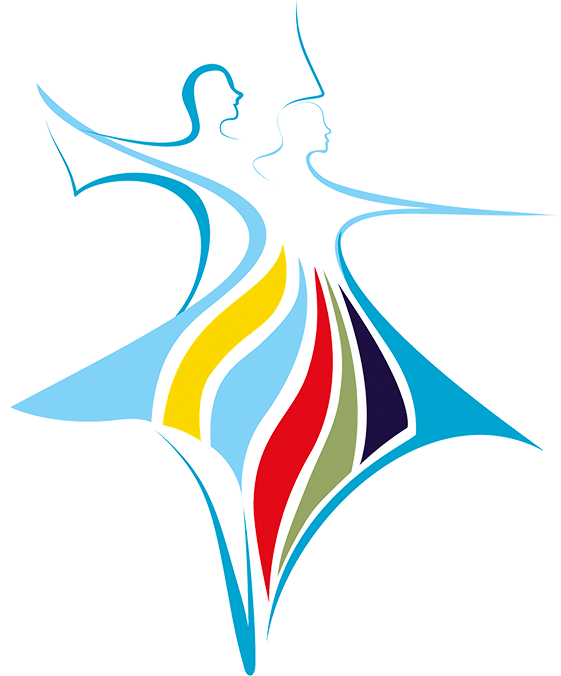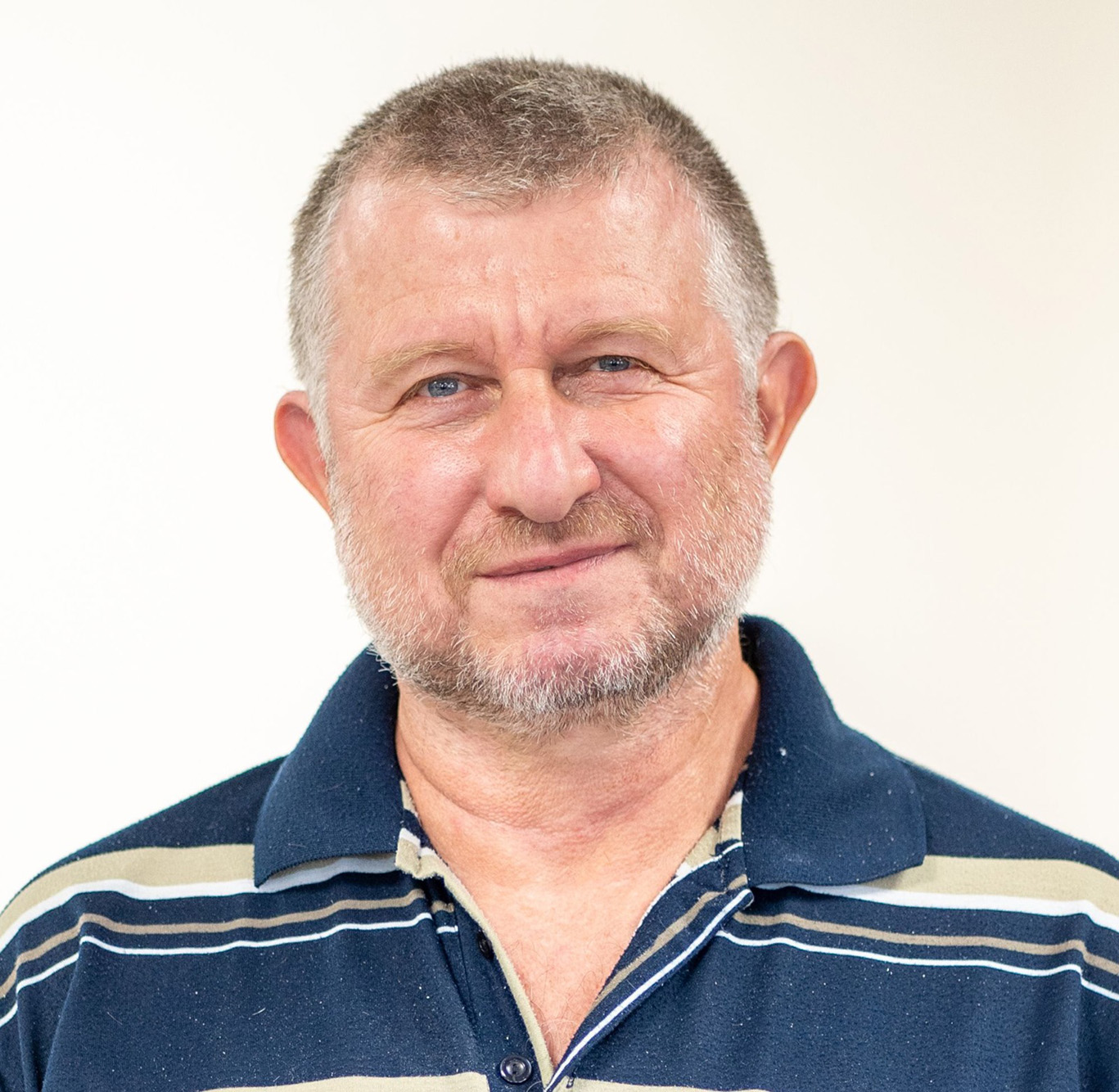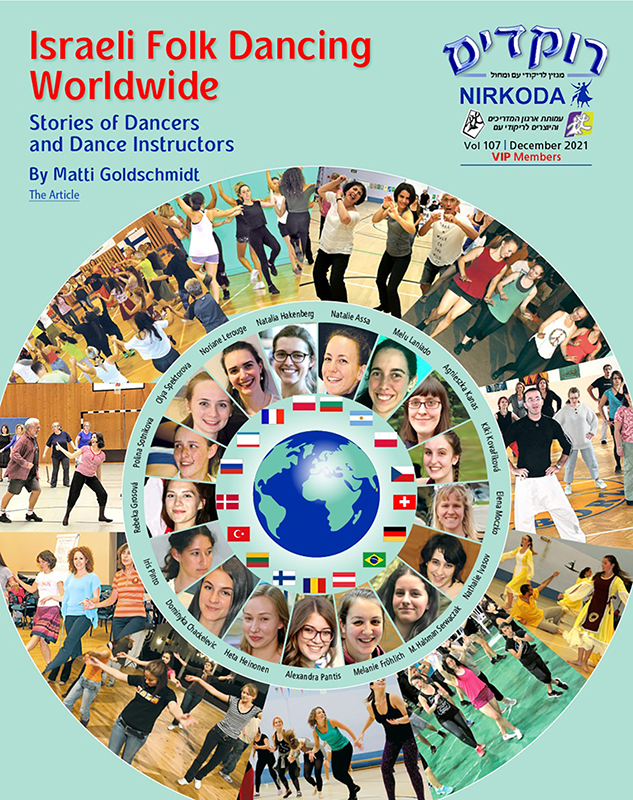- Home
- Rokdim Nirkoda 107
- What is an Israeli Folk Dance?
What is an Israeli Folk Dance?
Notes from a Panel Discussion from “Ashdodance 2021”
- Translation: Dena Matmon
A discussion took place at the “Ashdodance 2021” Festival, the title of which was “Israeli Folk Dances – Where are they headed?” Dr. Ronit Ronen Tamir moderated the discussion. Panelists included Elad Shtamer, Yankale Ziv, Michael Barzelai, Michal Afek, Roni Ashkenazi and Racheli Weizman. The panel members represented a broad spectrum of occupations – dance instructors, choreographers and members of Israeli dance troupes, from very senior ones to some that were very young. The audience took an active part in the discussion where we heard from Yaron Ben Simchon, Shlomo Maman, Avi Levy, Dado Kraus, Moshe Telem, Yaron Meishar, Yigal Betzer and others.
How Did They Begin?
The panel members described how they began their path in folk dancing. Most of them started dancing in elementary school. Elad Shtamer was exposed to Israeli dances and music in his home, at a very early age, and at folk dance sessions led by his father, Eli Shtamer z”l. After his father’s death, he began to choreograph. Elad dedicated his first dance, “Ilan”, to him.
Michael Barezilai, 32, was exposed to folk dancing when he was 8 at the country club that he and his mother went to. During his childhood, he was already imagining what steps would be suitable to what music. Six years ago, he started to introduce his dances, when he was invited to instruct at a camp abroad.
Roni Ashkenazi started dancing in a youth movement. He danced at sessions in the Krayot. His main function was participating in and organizing dance troupes.
Michal Afek started dancing in the fifth grade within the framework of “Beit Sefer Roked” in Kfar Saba. Later, she danced at large dance sessions and from there, she developed her professional dance career.
Yankale Ziv spoke about dancing at Beit HaHistadrut (Histadrut House) when he was in elementary school and later, he got to know a group of girls who danced with an accordionist. No one danced in Yankale’s home – it wasn’t considered proper. But later, his family supported him and became proud of his dance career.
Racheli Weizman spoke of her 25 years of work with dance troupes and of winning several dance competitions with new dances at the Karmiel Festivals. Her most famous and successful dance is “Ha’Rakdan Ha’Automati – The Automatic Dancer”.
What are Today’s Folk Dances? How Do They Differ From Those of the Past?
All the panelists agreed that the folkdance field at open sessions (i.e., “participatory dance” as opposed to “dance for the stage”) has undergone great changes, from the task of creating a unified dance heritage – as an ideology, with roots and culture – to the task of creating for a leisure culture. This change took place parallel to changes in society itself (i.e., the switch from an agricultural and cooperative society to one that is industrialized and individualistic), and to cultural changes (for example, the number of Mizrachi and Mediterranean songs since the 1980s).
Elad emphasized that this process caused many changes – the number of new dances increased as did participation in the sessions, the dances became more complex, the music changed. At the same time, the fact that Israeli folk dances underwent a change isn’t sufficient to define them as Israeli folk dances.
Ronit used the metaphor of “a bowl of salad” in which each vegetable preserves its own presence and shape but they have a common Israeli spice.
Shlomo Maman focused on the folkloristic base. In his opinion, the folkloristic base isn’t familiar enough to choreographers, so they have nothing on which to base their revival. He doesn’t think dances need to be simply ethnic, but that they should be characteristic of the local Israelis – our energy, our songs which combine sadness and joy, and reference the content and rhythm.
Michal emphasized the songs and the ability to sing them. On the other hand, she reminded us of the importance of the steps and not just of the popularity of the song.
According to Elad, the entire field, both dancers and instructors, makes it an Israeli entity, even if the melodies and the songs aren’t from here [Israel]. A dancer, sitting in the audience, mentioned that folk dances are dances intended for a non-professional audience, dances that can be done by everyone, dances that create a sense of cohesion and “togetherness”. Folk dances will survive because of what effect they have on the mind, body and soul.
A Proliferation of New Folk Dances
The discussion turned to the subject of the proliferation of new dances and the accompanying phenomena. Some have claimed that for every new song heard on the radio there is a choreographed dance. Some have claimed that young choreographers (and especially those who recently graduated from instructors’ courses and are less selective) do not have a sufficient base for quality work. On the other hand, Michael Barzelai notes that this phenomenon is nothing new – as he examined old songs, he discovered that most of them have choreographies and only some of them have survived the test of time and preference by the dancers. Today there are more songs, and since personal creativity can’t be stopped, the relevant question becomes: what causes some dances to remain while others disappear?
Moshe Telem and Avi Levy raised the political aspect and expressed nostalgia for a strong organization and for the “organizational committee” (as Yoav Ashriel z”l, did in the past) which would choose appropriate dances. It is interesting that Michael, the youngster in the group, quoted from Moshiko Halevy’s book that, “politics” always was and always would be a struggle over which dances would be taught and to whom and there were boycotts and struggles over who would be invited to teach his/her new dance and who wouldn’t.
There were those who would argue that the many new instructors were the source of the proliferation of new dances. But, on the other hand, there were those who said that today, the power is concentrated in the hands of the prominent instructors (for example, Gadi Bitton) and that they set the repertoire and the agenda. Elad pointed out that, in the final analysis, the instructors listen to their crowd, and dances that don’t interest their dancers will very quickly descend into the abyss of oblivion.
How to Attract Young People?
The panel devoted time to the question of the younger generation – how do you attract the youth to folk dance? How can opportunities be created for youth to be exposed to dance?
Topics were raised such as “Beit Sefer Roked”, which is almost non-existent at present, including dance into the gymnastics classes, or in activity breaks, and also encouraging the formation of performing dance troupes. Roni Ashkenazi even suggested bringing lehakot (dance troupes) to the schools to perform in order to encourage boys to dance and thus reduce the problem of not enough boys in lehakot and at harkadot (dance sessions). Michal Afek spoke about how she incorporates folk dance into the required high school physical education program.
An equally important topic was, what kind of repertoire is most appropriate to attract and bring youth and new dancers into dancing. On one hand, there were the proponents of heritage and the preservation of the classic dances. On the other hand, Elad and Michael claimed that there’s no chance of this because the youth will be bored and lose interest. Youth want more energetic music, more “contemporary”, the kind that they can also find on the radio. It is also desirable that the instructors be young because people aged 40-50 already seem to be anachronistic and irrelevant to youth. Only after the youth connect to folk dance through the new repertoire, will they be able to develop a taste for traditional dances too. But, there’s no chance they can begin dancing with these dances. Therefore, an up-to-date repertoire for beginner dancers is also required.
A point mentioned by Roni Ashkenazi was the increased number of young dancers abroad. This writer can testify that he encountered entire families abroad, including young people, who come to the dance sessions. It might be from the desire of the families to strengthen the connection of the younger generation to Judaism and Israel.
Summary
Ronit summarized the discussion by quoting her father, Dan Ronen: “Without knowledge of the past (your roots), there is no future”. This is happening within folk dance sessions. True, we are not shepherds playing the chalil (shepherd’s flute/recorder), we are not farmers, farming is decreasing around the world and we no longer sing, “Shir Hashirim -The Song of Songs,” as a love song. It’s important that folk dancing should continue to be a means of expression through which people may find their place in life and from which they can take great pleasure. The dances aren’t just a casual pastime or a body building activity. They are also a worthy expression of “Beautiful Israel”.
Thanks and Comments
I would like to thank Orly Shachar who helped formulate this article and also contributed her experience and opinions on the topics within it. Looking back on the discussion, I was pleasantly surprised at the depth of observation of the choreographers and instructors of the new generation, including their thoughts on preserving this field and passing it on to the next generation.
I was amazed that the existing debates about dances to non-Israeli melodies and songs weren’t expressed more sharply in the discussion. The approach was conciliatory and inclusive, although some people continue to be very critical. Anyway, it was an interesting discussion and I enjoyed participating in it and hearing the variety of opinions on key topics in the field of folk dance.









Comments
התראות